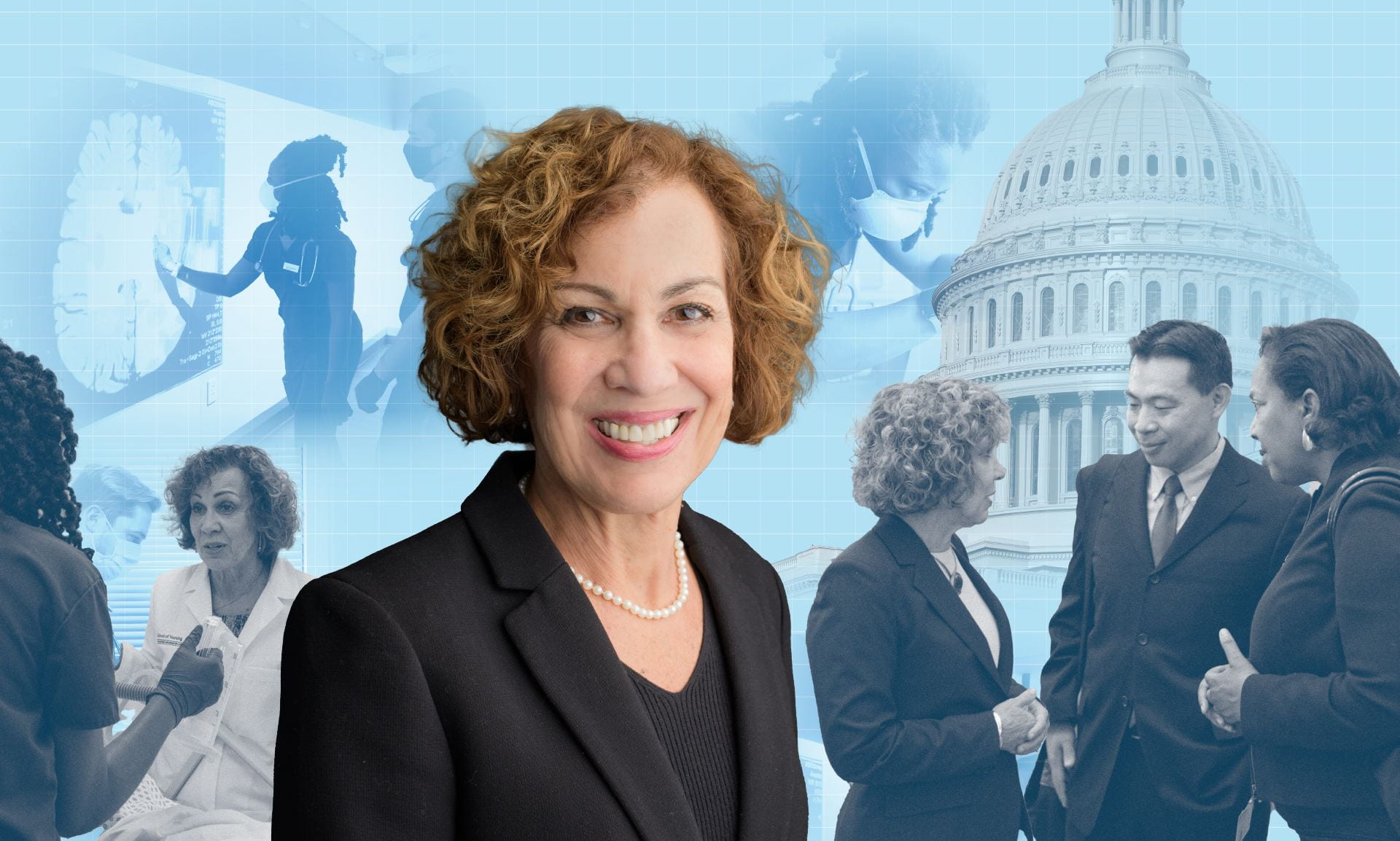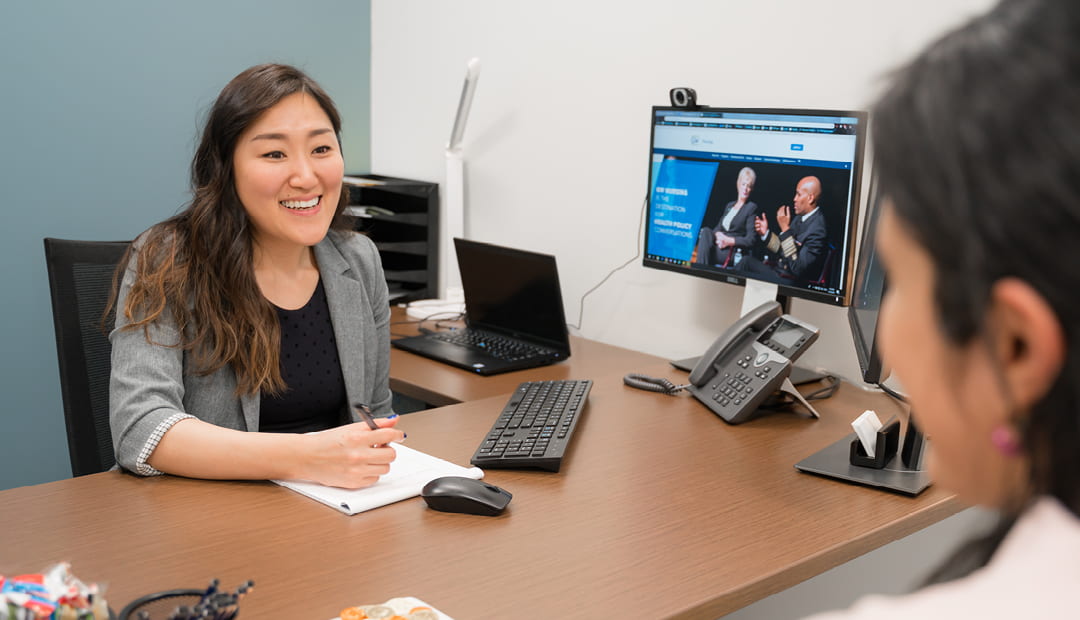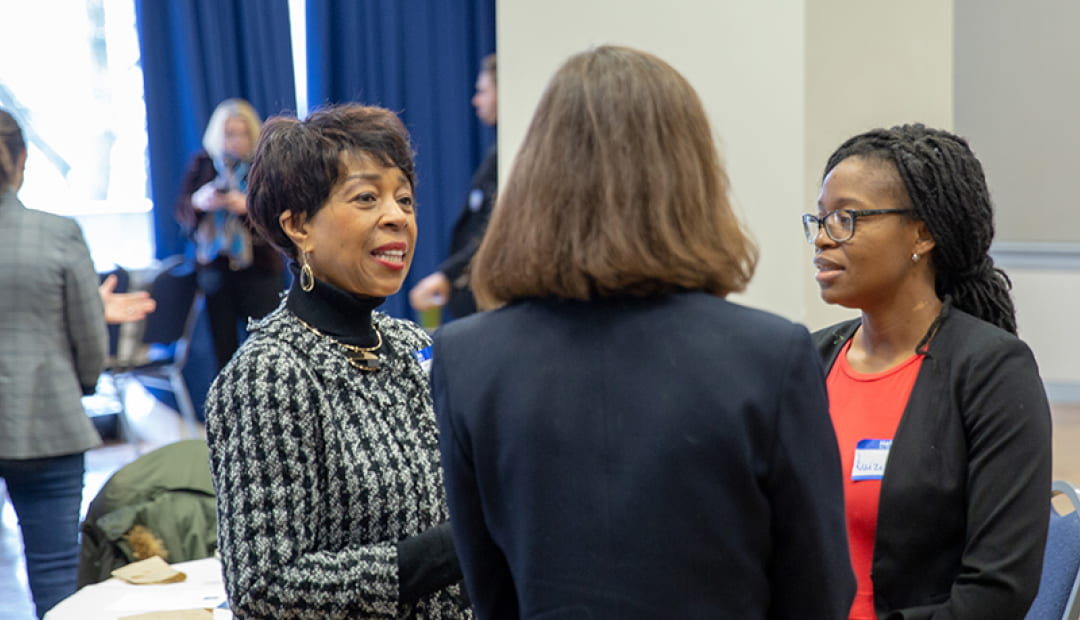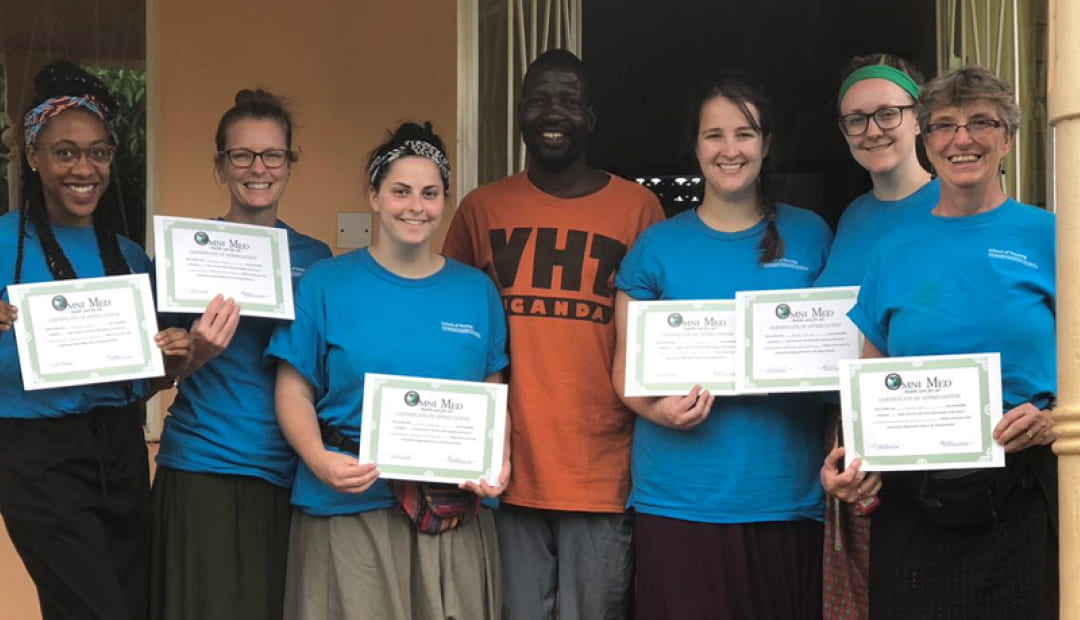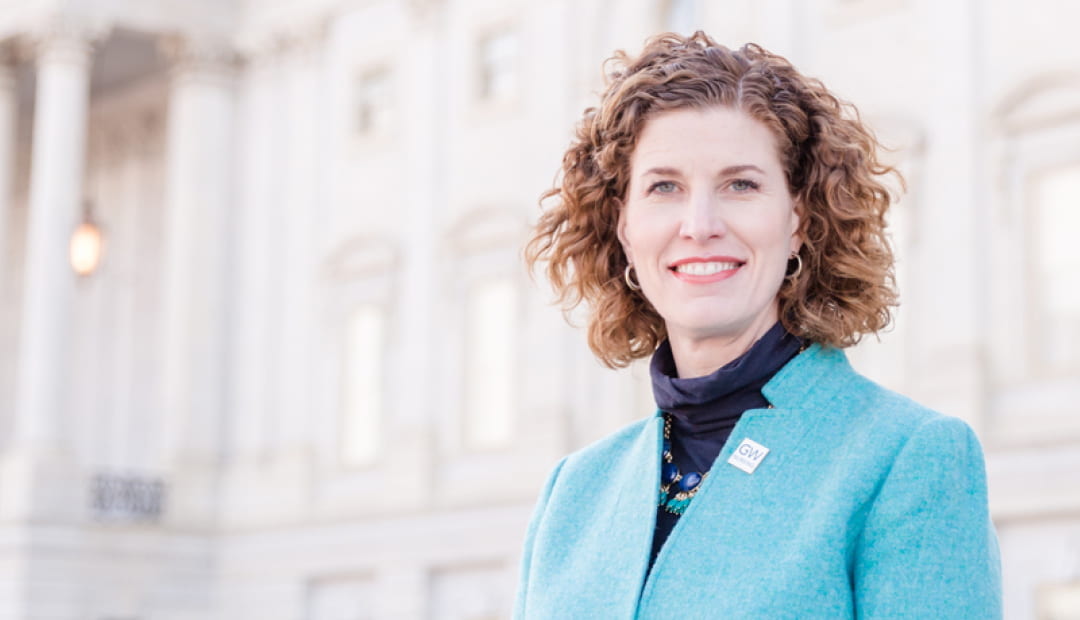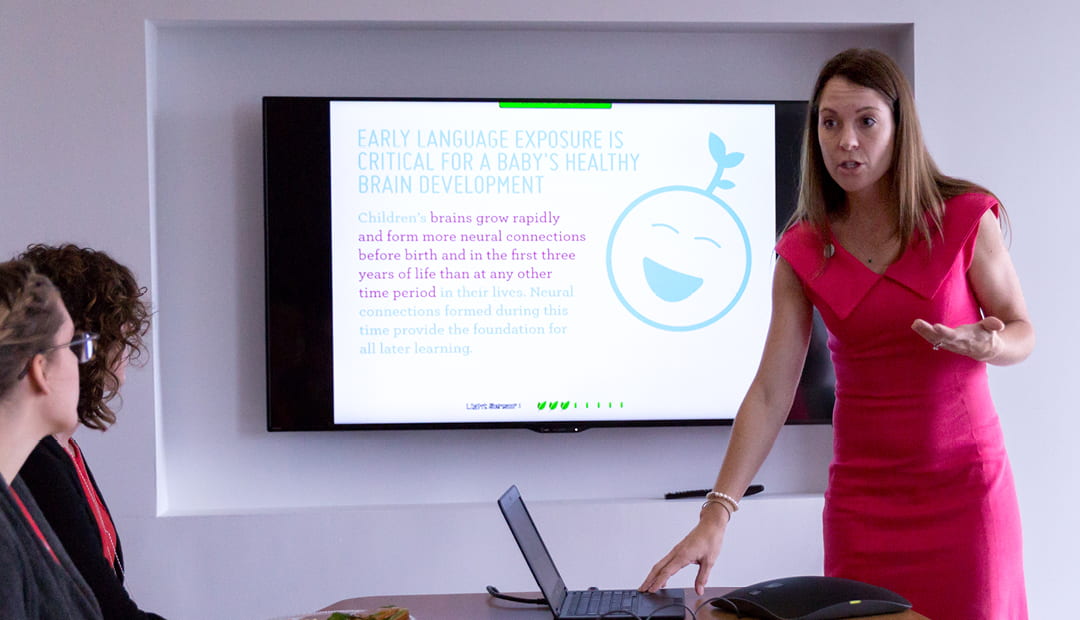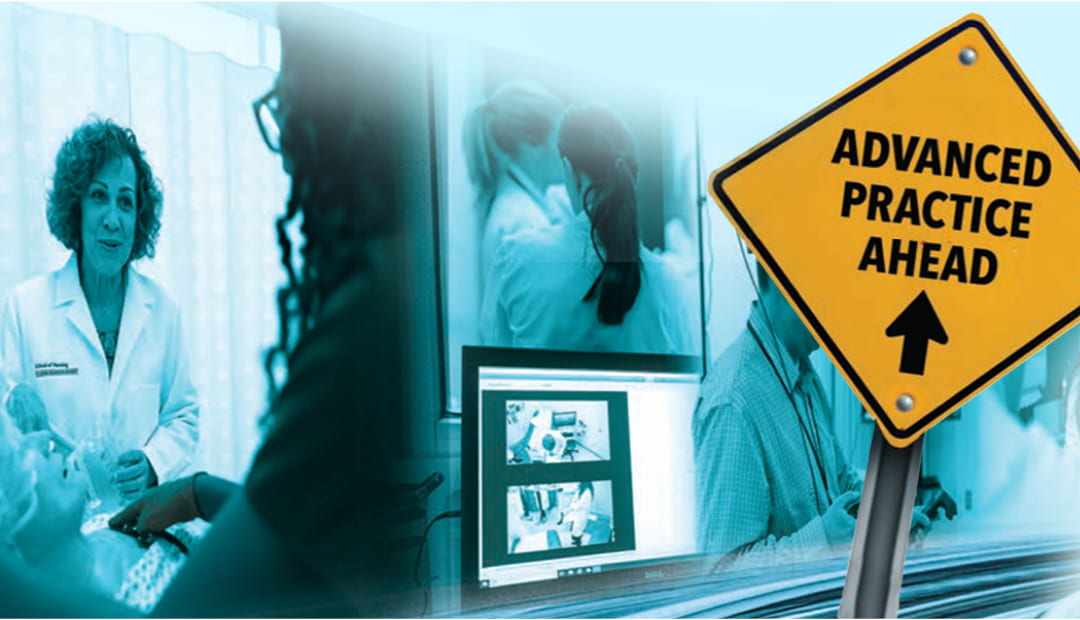A growing and aging population, large numbers of students and competition for clinical sites have created a “traffic jam” in advanced practice nursing (APN) education. At the same time, with a growing provider shortage, it’s more important than ever that the profession efficiently produces well-prepared providers.
GW Nursing Dean Pamela Jeffries describes the state of nurse practitioner (NP) education as a “traffic jam” due to the lack of available clinical sites and the larger number of NP students compared to medical students. Many nursing leaders across the nation this year have taken steps to clear the roads, turning to simulation to supplement clinical education hours as another avenue to provide the clinical practice hours and competency testing for NP students. While accrediting organizations require that NP students undertake a minimum of 500 direct patient care clinical hours to prepare for their future role, many programs require hundreds more clinical hours. Simulation offers a way to clear congestion at clinical sites while ensuring students are prepared to deliver high-quality care.
Health care simulation experts from professional organizations, schools and technology companies gathered in January of this year in Washington, D.C., to discuss how best to evaluate health care simulation in NP programs.
Hosted by the National Organization for Nurse Practitioner Faculties (NONPF) and GW Nursing, the Thought Leaders’ Summit on Simulation in NP Education examined existing evidence, discussed the challenges of evaluation and began formulating next steps.
Then in March, more than 100 nursing educators attended GW Nursing’s second annual simulation conference, which this year focused on simulation in NP education.
State of the science
While a framework for the effective use of simulation is established at the pre-licensure nursing level, little evidence exists regarding simulation’s use in APN programs.
NP education is fundamentally different from pre-licensure education and requires an entirely different approach from the established framework at the undergraduate level, said Mary Beth Bigley, CEO of NONPF.
“When we get to this level of education, standardized patient encounters have more value because it evaluates those higher-level skills,” Dr. Bigley said.
Carla Nye, clinical associate professor at the Virginia Commonwealth University School of Nursing, and Suzanne Campbell, associate professor at The University of British Columbia School of Nursing, previously surveyed the research related to simulation in NP education. Their examination of literature produced between 2010 and April 2015 found that a minimal number of research studies had been completed, the quality of studies was low, the studies used small sample sizes, the use of existing International Nursing Association for Clinical Simulation and Learning (INACSL) standards wasn’t known and there was a lack of standardized scenarios. An update of their work looking at research published between 2015 and 2019 did not show much improvement in the state of the science, Drs. Nye and Campbell said.
Despite its flaws, the existing body of research does offer promising outcomes, according to Drs. Nye and Campbell: Students like simulation and see its value; students self-report more confidence; simulation learning can be transferred to clinical settings; and simulation can improve communication skills.
Drs. Nye and Campbell also conducted their own inquiry to describe the current use of simulation in advanced practice registered nurse (APRN) programs. The study was born of the research arm of a Simulation in Advanced Practice Nursing Task Force organized after discussions about APN simulation at the 2016 INACSL annual conference.
Results of a descriptive survey sent to all APN programs in the United States and Canada show that a majority of the programs employed simulation up to 20 hours, with participants reporting a wide range of zero to more than 100 hours. Simulation is most frequently implemented in physical assessment courses, their survey showed, but it was also used in many other courses.
Schools most frequently reported using standardized patients (SPs), but the use of manikins, computer and virtual simulation, task trainers, interprofessional simulation, video recording and distance/telehealth was also reported.
This survey also showed that 98 percent of respondents reported using simulation in their APN programs, and 77 percent of respondents supported the replacement of some percentage of clinical hours with simulation. Drs. Nye and Campbell stressed survey participants who chose to complete the survey may have a pro-simulation bias.
When we get to this level of education,
standardized patient encounters have more value because it evaluates those higher-level skills.”
Mary Beth Bigley
Barriers
The survey study conducted by Drs. Nye and Campbell found that faculty skill and staff support were the most reported barriers to simulation use. Programs reported additional barriers to simulation use in APN programs, such as an inconsistent course-by-course approach to simulation, an increase in student fees to pay for resources, competition with undergraduate simulation resources and distance education.
In small working groups, summit attendees identified forces that inhibit the adoption of simulation in achieving NP competencies. Lack of resources and equity of resources between programs led the list, with limited faculty knowledge and skills and a dearth of peer-reviewed literature also emerging as major areas of concern.
Educators evaluate an NP student’s ability to obtain a patient health history, conduct a physical exam, work through a diagnosis and create a management plan. All of these skills are based on critical thinking rather than manual skills, Dr. Bigley said.
Standardized patients are considered the highest-fidelity level of simulation, but the resources required to both train and pay SPs were repeatedly cited as a barrier.
NP education is already undergoing a major shift, with programs working toward compliance with the goal of a Doctor of Nursing Practice (DNP) as the entry to practice by 2025.
“NONPF is committed to the DNP as the entry degree by 2025. NP practice should be at the DNP level,” said Lorna Finnegan, executive associate dean at the University of Illinois at Chicago and NONPF president.
Need for adoption
Despite the challenges and complications, NP educators agree that simulation will only grow in its value to the field.
Emerging evidence shows that learning does occur during simulation experiences, said Angela McNelis, associate dean for scholarship, innovation and clinical science, at GW Nursing.
Reliance on the current precepted clinical model is a challenge to sustain or expand, so educators must focus on maximizing student time in clinical settings and exploring alternative models, she said.
The demands and technology savviness of this generation of learners dominated the summit’s discussions about the need for adoption of simulation.
Current evidence shows that students report increased confidence, decreased anxiety and communication skills development in simulation scenarios, Dr. McNelis said.
Faculty members who work closely with students know that simulation works, said Pamela Slaven-Lee, senior associate dean for academic affairs at GW Nursing. “We’re in the rooms with the students, and we see the light bulb come on. We see the learning, we know it’s happening, and we need the research so we can move forward. Our undergraduate colleagues are ahead of us,” Dr. Slaven-Lee said.
Current students are digital natives, Christine Pintz, professor at GW Nursing, said during the panel presentation at the March conference. “These are individuals who understand the simulation process and also want this process,” she said.
Anecdotal evidence also reinforces the openness to including simulation in NP programs, with one attendee sharing that her colleagues call simulation “on-campus clinical hours.”
Moving forward
To address the need for a standardized, efficient, sustainable model for NP clinical education, a team led by Drs. Bigley and Jeffries presented their proposed study on “The Use of Simulation in Family Nurse Practitioner Education.” A white paper with a call to action regarding the need for more evidence to use simulations in NP clinical education is expected to be published later this year and should set the stage for a rigorous study.
Evidence is needed through conducting multisite studies on NP clinical education to obtain evidence for new models of education. In the current environment, significant shortages of clinical sites, clinical preceptors and financial resources pose barriers to NP education. These barriers create an opportunity for educators to develop new models capitalizing on the strong tradition of preceptor-based clinical experiences and leveraging innovative and evidence-based simulations that meet national competencies and continue to prepare graduates for practice. As noted by Dr. Jeffries, the future can be accomplished if there is a concerted effort to generate evidence through robust and rigorous research on simulation in NP education. The current clinical model faces ongoing challenges and requires new thinking. It is time to be bold and institute new models that include evidence-based simulation.
AUTHOR Erin julius
